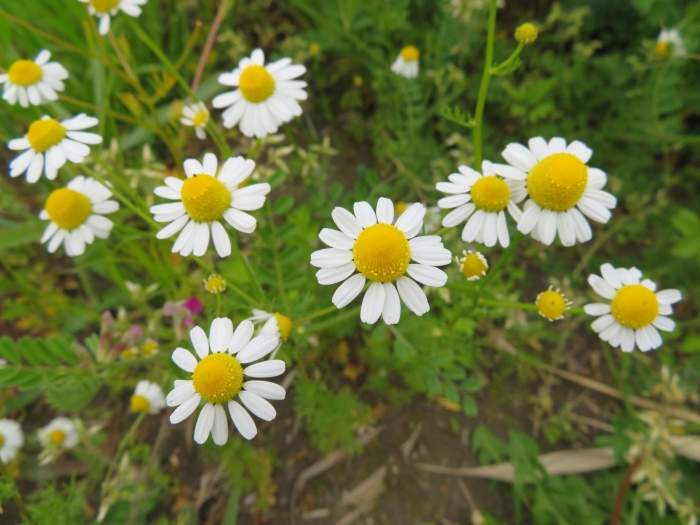German Chamomile
(Matricaria chamomilla)
German Chamomile (Matricaria chamomilla)
/
/

© belvedere04
CC BY 4.0
Image By:
© belvedere04
Recorded By:
Copyright:
CC BY 4.0
Copyright Notice:
Photo by: © belvedere04 | License Type: CC BY 4.0 | License URL: http://creativecommons.org/licenses/by/4.0/ | Uploader: belvedere04 | Publisher: iNaturalist |
























Estimated Native Range
Summary
Matricaria chamomilla, commonly known as German chamomile, is an annual herb native to southern and eastern Europe and parts of Asia. It has become widely naturalized in temperate regions worldwide. German chamomile typically grows to a height of 6-24 inches (15-61 cm) with a spread of 8-16 inches (20-40 cm). It has delicate, feathery bipinnate leaves and bears daisy-like flowers with white petals surrounding a yellow disc, blooming from early to midsummer. The flowers are highly aromatic and are considered very showy due to their abundance and fragrance.
German chamomile is valued for its fragrant, apple-scented blossoms which are harvested to produce chamomile tea, known for its soothing properties. The plant contains a blue essential oil that is used for its medicinal benefits, including anti-inflammatory and calming effects. It is easy to grow and maintain, thriving in full sun to part shade, and prefers well-drained soil. While it can tolerate a range of soil types, it does best in sandy, loamy soils. In cultivation, it is used for herb gardens, as a border plant, and for its ornamental and medicinal qualities. However, it can self-seed prolifically and become invasive in some regions, so it is important to manage its spread.CC BY-SA 4.0
German chamomile is valued for its fragrant, apple-scented blossoms which are harvested to produce chamomile tea, known for its soothing properties. The plant contains a blue essential oil that is used for its medicinal benefits, including anti-inflammatory and calming effects. It is easy to grow and maintain, thriving in full sun to part shade, and prefers well-drained soil. While it can tolerate a range of soil types, it does best in sandy, loamy soils. In cultivation, it is used for herb gardens, as a border plant, and for its ornamental and medicinal qualities. However, it can self-seed prolifically and become invasive in some regions, so it is important to manage its spread.CC BY-SA 4.0
Plant Description
- Plant Type: Herb
- Height: 1.1-2.5 feet
- Width: 0.1-0.6 feet
- Growth Rate: Moderate, Rapid
- Flower Color: White, Yellow
- Flowering Season: Spring, Summer, Fall
- Leaf Retention: Deciduous
Growth Requirements
- Sun: Full Sun, Part Shade
- Water: Low, Medium
- Drainage: Fast, Medium, Slow
Common Uses
Bee Garden, Butterfly Garden, Edible*Disclaimer: Easyscape's listed plant edibility is for informational use. Always verify the safety and proper identification of any plant before consumption., Low Maintenance
Natural Habitat
Native to southern and eastern Europe and parts of Asia
Other Names
Common Names: German Chamomile, Chamomile, Common Chamomile, Crown Mayweed, Hungarian Chamomile, Wild Chamomile
Scientific Names: , Matricaria chamomilla, Anthemis vulgaris, Anthemis vulgaris, Camomilla patens, Chamaemelum chamomilla, Chamaemelum suaveolens, Chamaemelum vulgare, Chamomilla chamomilla, Chamomilla chamomilla
GBIF Accepted Name: